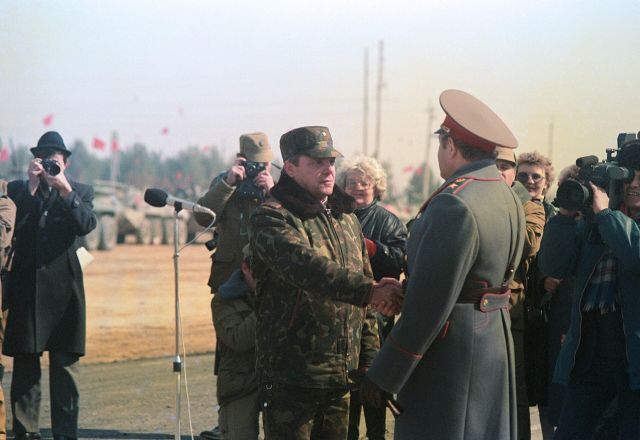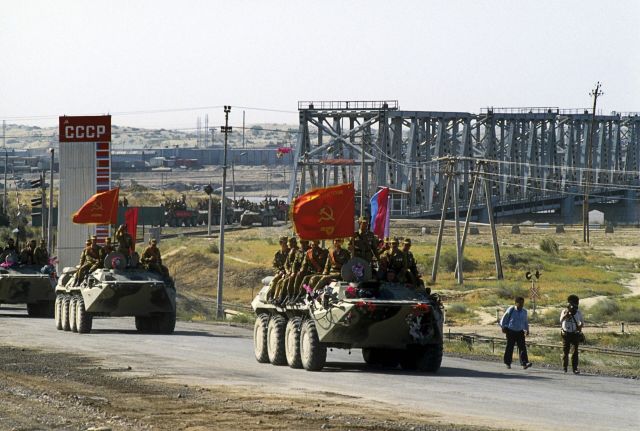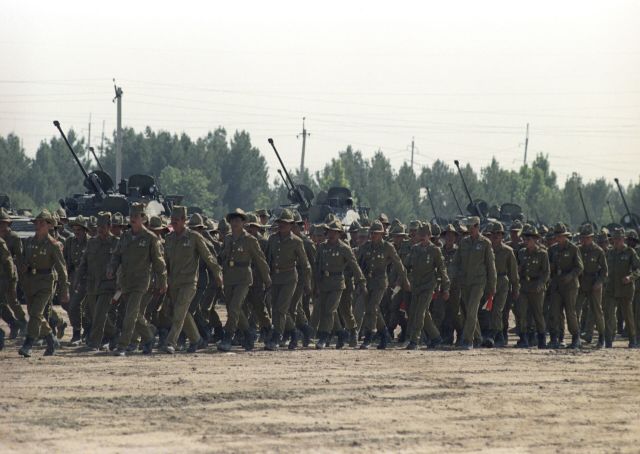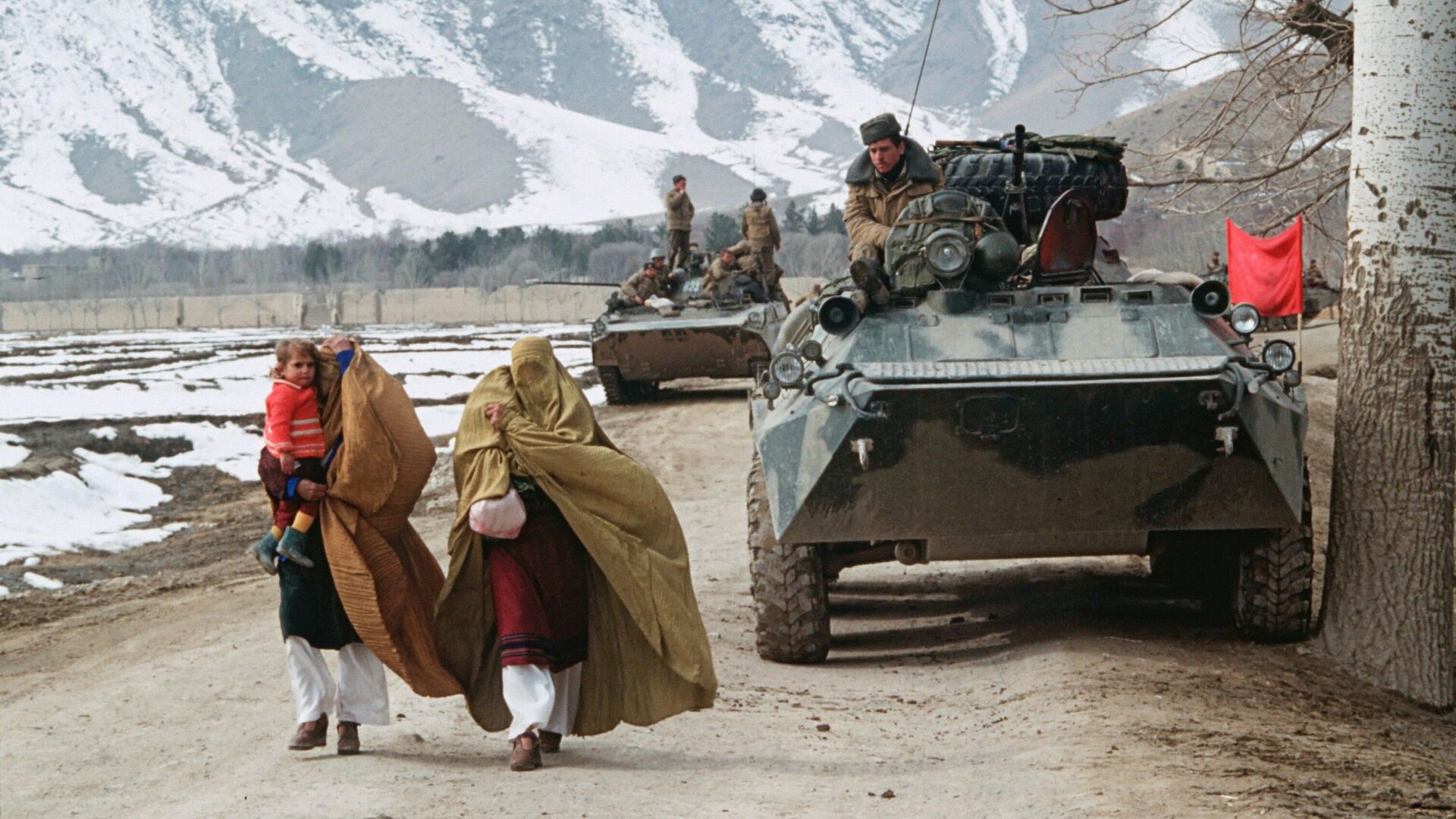35 years ago, the USSR completed the withdrawal of troops from Afghanistan
MOSCOW, Feb 15 — RIA Novosti, Andrey Kotz. This conflict lasted for almost a decade and claimed the lives of 15,000 Soviet soldiers, officers and warrant officers. Exactly 35 years ago, the last army units left the territory of Afghanistan. The decision to withdraw a Limited contingent of Soviet troops was largely political. But the army completed all its tasks and returned home in an organized manner. About the events of those days — in the material of RIA Novosti.
The last battalion
A long column of well-washed armored personnel carriers of the 783rd separate reconnaissance battalion with Soviet flags and military banners, roaring diesels and honking loudly, is moving across the bridge over the Amu Darya border river. On the armor and in the landing compartments — demob in "parades", with combat medals and orders. On tanned, weathered, war—hardened faces there are smiles and joy from the upcoming meeting with home. The scouts of the 40th army, the military elite, are the last to leave Afghanistan.

A column of armored vehicles crosses the Afghan-Soviet border on the Friendship Bridge over the Amu Darya River. The end of the withdrawal of a limited contingent of Soviet troops from the Democratic Republic of Afghanistan
Image source: © RIA Novosti / V. Kiselyov
"Of course, for our soldiers, sergeants, warrant officers and officers, returning to their homeland became a real holiday," recalled Lieutenant General Ivan Korobeynikov, who commanded the Central Asian Border District in those years. — In freshly laundered uniforms, with hemmed doorways, unfolded panels on which the names of units are written, our soldiers looked spectacular when crossing the border. There were inscriptions on the sides of the combat vehicles: "I'm back, Mom!"
Hundreds of people are already waiting for the column on the other side — journalists, relatives, local residents. Famous artists led by Joseph Kobzon take part in the festive concert right on the border. Songs from the Great Patriotic War are being played. The column is greeted with an ovation, the soldiers are given flowers, shake hands, hug. The newsreel footage clearly shows that many veterans have tears in their eyes.

The commander of the Limited contingent of Soviet troops in Afghanistan, Lieutenant General Boris Gromov, reports on the completion of the withdrawal of troops to the commander of the Turkestan Military District (TurkVO), Army General Nikolai Popov
Image source: © RIA Novosti / V. Kiselyov
The last one to leave the empty bridge is an armored personnel carrier with the commander of the 40th Army, Lieutenant General Boris Gromov. On our shore, the commander jumps off his armor, looks at the Afghan land for a long time and turns to the journalists. The next day, his phrase "There is not a single Soviet serviceman left behind my back" will make the front pages of the world's media.
After the interview, Maxim's eldest son runs up to the general shouting "Dad!" with a bouquet of flowers and hangs on his father's neck. They hug for a long time and tightly, then go out to meet the people. The officer climbs aboard the truck facing his fellow citizens and cannot speak for a long time. Finally, he takes off his cap, wipes his face with it and casually, not at all solemnly says: "Here we are at home..."
Organized withdrawal
According to the Geneva Agreements, the withdrawal of troops began on May 15, 1988. By the end of January 1989, there were still 30,000 soldiers and officers in Afghanistan. About 70 thousand had already returned home by that time.
The Fortieth Army remained a formidable force at that time. Four divisions, including the airborne, a separate parachute regiment, 24 artillery divisions, four aviation regiments, four helicopter squadrons, as well as several special purpose battalions.
The army did not "flee", as the Western press gloatingly wrote at the time, but left in an organized manner. While ensuring the withdrawal of troops, the OKSV units guarded communications, security zones and other facilities.
To understand how much attention the Soviet command paid to security, just look at the numbers. 26 battalions were involved in the protection of roads in the eastern direction. More than four and a half thousand soldiers at 199 outposts and posts. Three battalions performed similar tasks in the western direction of withdrawal.
The presence of a limited contingent of Soviet troops in Afghanistan
Image source: © RIA Novosti / Andrey Solomonov
Military airfields throughout Afghanistan were guarded by 25 battalions. About 100 outposts encircled Kabul within a radius of 25 kilometers. In addition, special forces units and the 103rd Airborne Division combed the routes of the militants.
The precautions were not unnecessary. Soviet troops were regularly ambushed. However, serious losses were avoided, including thanks to aviation. Despite the constant threat from the Dushmans, the withdrawal of troops was on schedule.

Solemn meeting of Soviet troops on the state border of the Uzbek SSR with the DRA near the city of Termez
Image source: © RIA Novosti / Vyacheslav Kiselyov
"According to the decision I made, the last unit of the 40th Army left Kabul on February 4," Boris Gromov later said. — Within three days, starting on January 30, the main part of the aviation was relocated from Bagram airfield to the territory of the Soviet Union. Following this, the airfield security units left the city, and on February 8, the sequential withdrawal of 40th Army personnel from outposts on the Kabul —Salang Pass road was completed. Two days later, our units were completely withdrawn from the transit area, and the highway itself was handed over to government troops. In the western direction, Soviet units left Shindand on February 4 and left Herat on February 12."
From February 11 to 14, all units of the 40th army, which were located in the area from the Salang Pass to Khayroton, entered the territory of the Turkestan military District. And on February 15, the large-scale operation was completed.
The tasks are completed
Western propaganda and the domestic Perestroika press tried to present the withdrawal of Soviet troops from Afghanistan as a military defeat. The supposedly bulky and clumsy red war machine lost to the freedom-loving Mujahideen rebels. Then, on both sides of the Atlantic, they watched the Hollywood action movie "Rambo 3" released in 1988, where they gave exactly such a picture. However, the reality was different.
"I am deeply convinced that there are no grounds for claiming that the 40th army was defeated, as well as that we won a military victory in Afghanistan,— Boris Gromov argued. — At the end of 1979, Soviet troops entered the country unhindered, fulfilled their tasks - unlike the Americans in Vietnam — and returned home in an organized manner. If we consider armed opposition detachments as the main enemy of a Limited contingent, then the difference between us is that the 40th army did what it considered necessary, and the dushmans did only what they could."
After the withdrawal of Soviet troops, the usual civil strife unfolded in Afghanistan. The country turned into the world's largest heroin producer — the consequences of this were felt throughout the 1990s by post-Soviet Russia.

Withdrawal of a limited military contingent of Soviet troops from Afghanistan
Image source: © RIA Novosti / V. Kiselyov
Seven years later, the Taliban overthrew Najibullah's regime, and the country finally collapsed into anarchy. For almost ten years, Soviet internationalist soldiers protected Afghans from this fate. But the politicians decided to change everything.

